Every week I’ll provide updates on the latest trends in cloud software companies. Follow along to stay up to date!
A Shift To Growth?
I think the market and companies are starting to shift focus towards growth. Over the last 2 years there has been a big shift in how software companies value growth vs profitability. Growth was the sole focus in the ZIRP period, and as we came out of that period there was a renewed focus on profitability. So what have been the results? The chart below shows LTM FCF margins. As you can see, a huge percentage of the public software companies are now FCF profitable. This is a huge shift from a couple years ago. Software companies, for the most part, showed they were able to drive real operating leverage.
But FCF doesn’t come free. It generally comes at the expense of growth. And over the last few years growth has come down a lot. Of course macro had a much bigger impact on growth (it got a lot harder to sell software), but companies also focused more on driving efficiency than driving growth. The chart below shows how median growth rates have come down
But something interesting has happened recently. It would appear that leading indicators show that companies are starting to lean back into growth. AND simultaneously, the market isn’t valuing profitability in the same way it did over 2023 and early 2024.
Let’s start with the market. The below chart shows a regression of multiple vs growth, color coded by FCF margin. I plotted the same chart a while back (some time in 2023 I believe) where every blue dot was above the regression line (meaning the public markets we’re valuing profitable companies higher than non profitable ones). I can’t seem to find where I published it, maybe someone can dig it up… [edit: it can be found here in this tweet. As you can see, all blue dots above the line!] As you can see from the chart today, there are a lot of blue dots below the line, and a lot of yellow dots above the line. What does this tell me? The market is starting to move away from valuing profitability as much as they did over the last 18 months.
Now let’s talk about some of the leading indicators from companies. To start, FCF margins are starting to decline. Only half of the companies have reported Q3 ‘24, but so far the down trend from Q2 has continued. Salesforce said they’re hiring 1,000 people in a push for AI leadership.
And this makes sense - we’re heading into one of the largest technology shifts in decades (AI), and companies are starting to invest into a growth cycle. Rates look like they’ll continue to fall (or at least not increase any further). A Trump presidency has given the market more confidence in the economy. All of these factors provide positive reflexivity that a growth cycle is coming. The big question - will the revenue growth show up? We’re starting to see the expenses pick up. But ultimately revenue growth must follow. The good news is net new ARR added per quarter is trending in the right direction. So far this quarter has been the second best since peak ZIRP in Q4 ‘21 (chart below). Is Software back?! We’ve certainly see a rotation into more software names recently it appears.
In summary, I think we’re starting to see leading indicators that the market is starved for growth, and ready to start rewarding it should it show up. Investors come to technology looking for growth, and we haven’t seen any for a while (there are no public software companies in my universe of ~80 who are projected to grow >30% next year). The AI platform shift certainly brings a promise of growth re-accelerating which many companies are investing behind, but not every company will have the ability (market position, product leadership, execution, etc) to actually recognize positive ROI and revenue growth from their investments. Those who do are set up very nicely to deliver shareholder value (and this will not only be public companies, but private companies like Databricks and others as well).
Quarterly Reports Summary
Top 10 EV / NTM Revenue Multiples
Top 10 Weekly Share Price Movement
Update on Multiples
SaaS businesses are generally valued on a multiple of their revenue - in most cases the projected revenue for the next 12 months. Revenue multiples are a shorthand valuation framework. Given most software companies are not profitable, or not generating meaningful FCF, it’s the only metric to compare the entire industry against. Even a DCF is riddled with long term assumptions. The promise of SaaS is that growth in the early years leads to profits in the mature years. Multiples shown below are calculated by taking the Enterprise Value (market cap + debt - cash) / NTM revenue.
Overall Stats:
Overall Median: 5.9x
Top 5 Median: 19.0x
10Y: 4.4%
Bucketed by Growth. In the buckets below I consider high growth >27% projected NTM growth (I had to update this, as there’s only 1 company projected to grow >30% after this quarter’s earnings), mid growth 15%-27% and low growth <15%
High Growth Median: 8.7.x
Mid Growth Median: 10.6x
Low Growth Median: 4.7x
EV / NTM Rev / NTM Growth
The below chart shows the EV / NTM revenue multiple divided by NTM consensus growth expectations. So a company trading at 20x NTM revenue that is projected to grow 100% would be trading at 0.2x. The goal of this graph is to show how relatively cheap / expensive each stock is relative to their growth expectations
EV / NTM FCF
The line chart shows the median of all companies with a FCF multiple >0x and <100x. I created this subset to show companies where FCF is a relevant valuation metric.
Companies with negative NTM FCF are not listed on the chart
Scatter Plot of EV / NTM Rev Multiple vs NTM Rev Growth
How correlated is growth to valuation multiple?
Operating Metrics
Median NTM growth rate: 12%
Median LTM growth rate: 15%
Median Gross Margin: 76%
Median Operating Margin (7%)
Median FCF Margin: 15%
Median Net Retention: 110%
Median CAC Payback: 38 months
Median S&M % Revenue: 40%
Median R&D % Revenue: 25%
Median G&A % Revenue: 17%
Comps Output
Rule of 40 shows rev growth + FCF margin (both LTM and NTM for growth + margins). FCF calculated as Cash Flow from Operations - Capital Expenditures
GM Adjusted Payback is calculated as: (Previous Q S&M) / (Net New ARR in Q x Gross Margin) x 12 . It shows the number of months it takes for a SaaS business to payback their fully burdened CAC on a gross profit basis. Most public companies don’t report net new ARR, so I’m taking an implied ARR metric (quarterly subscription revenue x 4). Net new ARR is simply the ARR of the current quarter, minus the ARR of the previous quarter. Companies that do not disclose subscription rev have been left out of the analysis and are listed as NA.
Sources used in this post include Bloomberg, Pitchbook and company filings
The information presented in this newsletter is the opinion of the author and does not necessarily reflect the view of any other person or entity, including Altimeter Capital Management, LP ("Altimeter"). The information provided is believed to be from reliable sources but no liability is accepted for any inaccuracies. This is for information purposes and should not be construed as an investment recommendation. Past performance is no guarantee of future performance. Altimeter is an investment adviser registered with the U.S. Securities and Exchange Commission. Registration does not imply a certain level of skill or training.
This post and the information presented are intended for informational purposes only. The views expressed herein are the author’s alone and do not constitute an offer to sell, or a recommendation to purchase, or a solicitation of an offer to buy, any security, nor a recommendation for any investment product or service. While certain information contained herein has been obtained from sources believed to be reliable, neither the author nor any of his employers or their affiliates have independently verified this information, and its accuracy and completeness cannot be guaranteed. Accordingly, no representation or warranty, express or implied, is made as to, and no reliance should be placed on, the fairness, accuracy, timeliness or completeness of this information. The author and all employers and their affiliated persons assume no liability for this information and no obligation to update the information or analysis contained herein in the future.







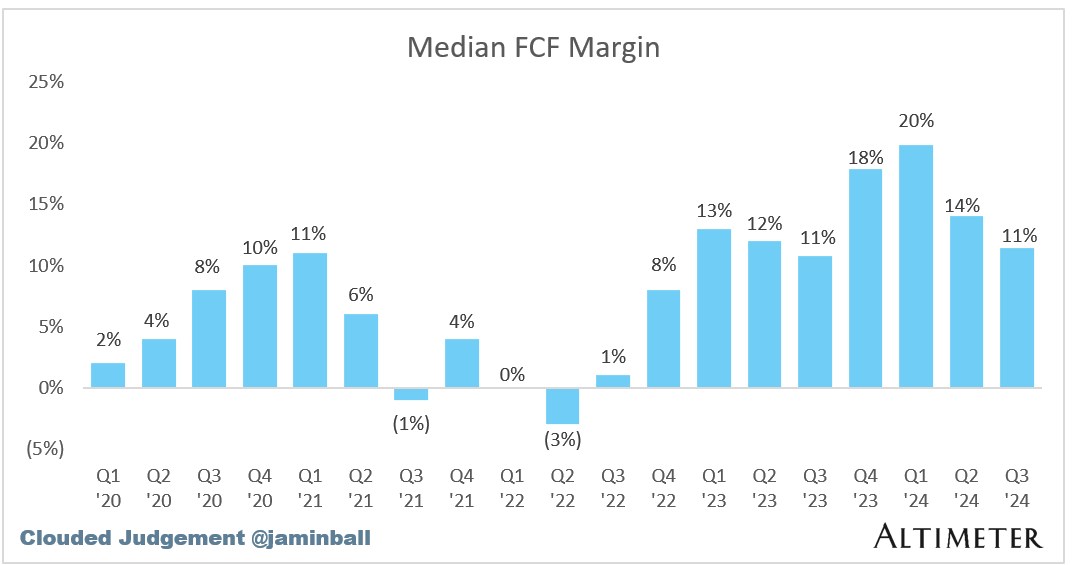











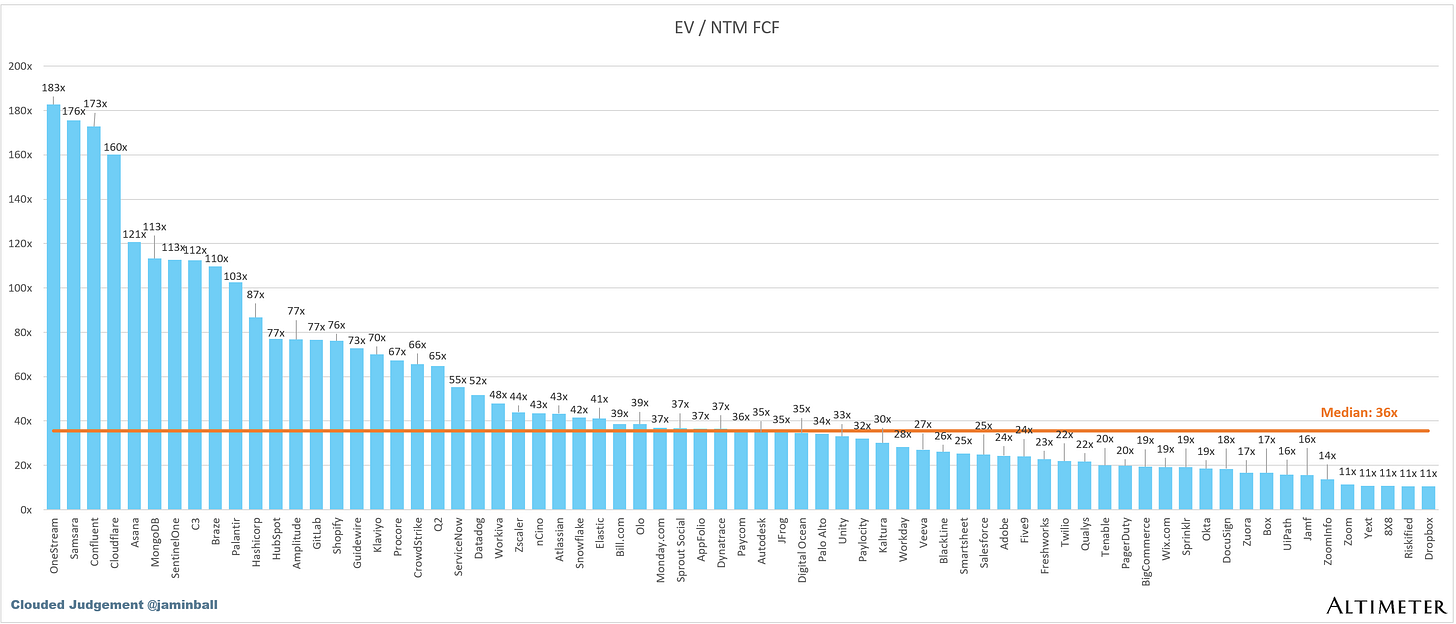
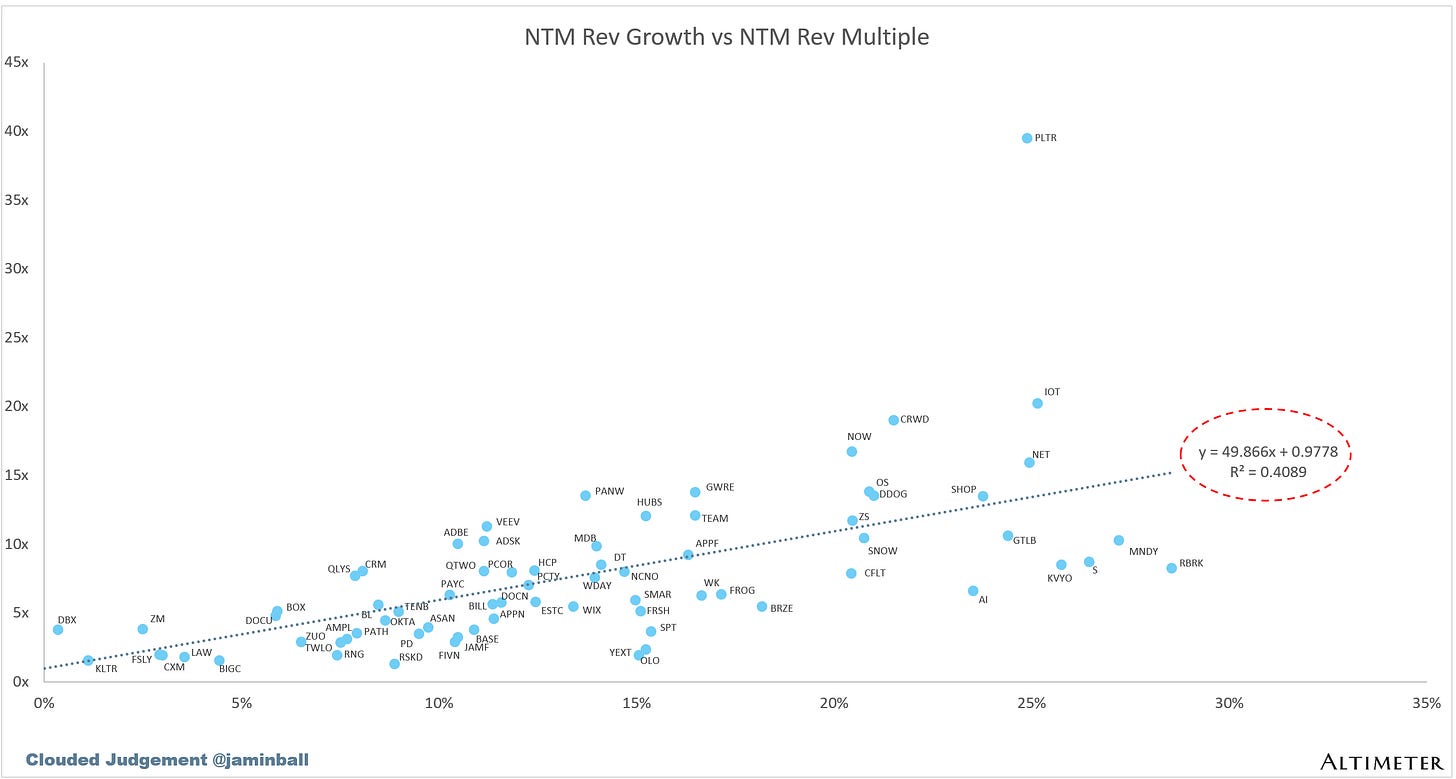
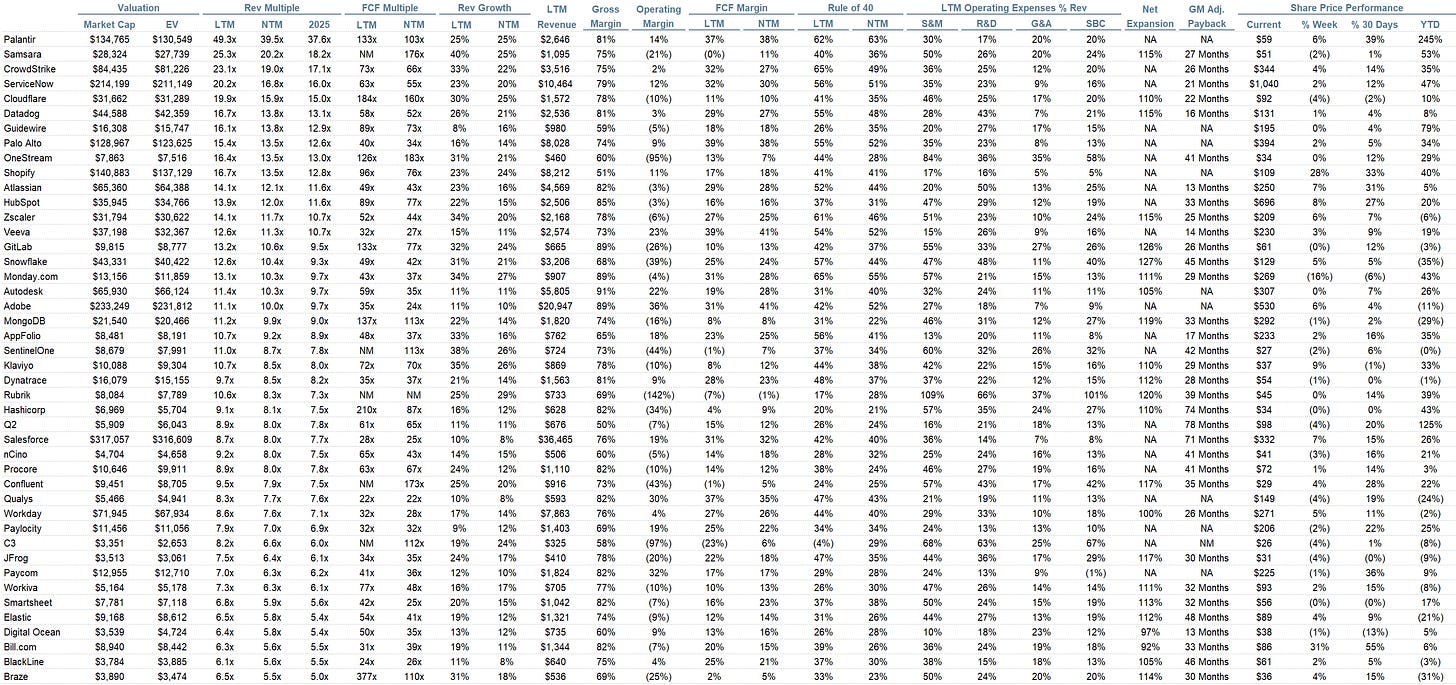
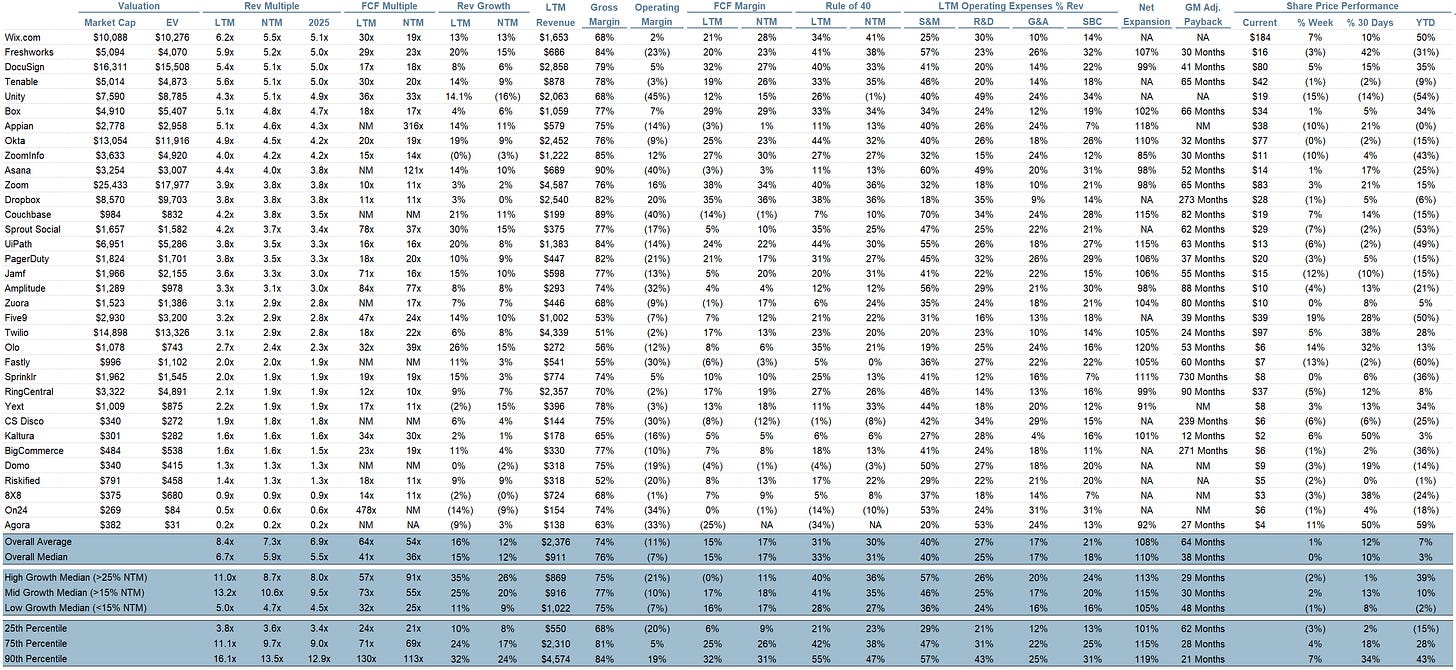
Some very interesting data. Jamin. I think the Q4 earnings calls will tell us if and where the growth is coming. So far, Q3 earnings reports have provided scant insight into how 2025 will play out, except for a handful of companies that are on a seemingly new business trajectory e.g. APP. Cheers!
does applovin not fit into this group ?